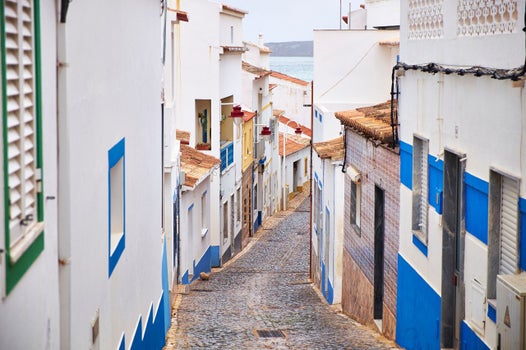Hidden Portugal: five secret coastlines
If you’re planning a trip to Portugal, forget the busy resort towns of the Algarve. Its coastline hides wilder, quieter, more evocative places – where fishing villages resist reinvention, surf breaks remain uncrowded, and hidden beaches wait to be discovered. From the north to the south, we’ve pinpointed five lesser-known stretches of coast that offer a sense of solitude and a connection to Portugal’s natural beauty.

North by north-west: Costa Verde
For a wilder, greener alternative to the sun-bleached south, head north. Stretching from Porto to the Minho River on the Spanish border, Costa Verde's string of cliffs and coves is defined by pine-backed dunes, pounding surf, and hillsides lined with vines. The weather may not be as predictable as elsewhere, but when the sun does shine you’ll have beaches like Praia de Afife, Moledo, and Vila Praia de Âncora to yourself.
Inland, the Alto Minho region is dotted with manor houses turned guesthouses, and we love the 17th-century Solar de Serrade. Set on a working wine estate, guests are encouraged to get involved in making (and enjoying) the Alvarinho wine, and the restaurant stands as one of the best in the area.
Where mountains meet the sea: Serra da Arrábida
You’d be forgiven for thinking the coast south of Lisbon is all commuter sprawl and large-scale resorts – but then you hit the Arrábida Natural Park, where a limestone mountain range tumbles into the Atlantic. Hiding tiny coves and an ecological diversity more in line with the Med, it’s best explored with a kayak or boat tour which can be arranged in the fishing town of Sesimbra or the larger Setúbal.
Its compact size makes the park a great day trip option from Lisbon, but if you’d like to linger longer, book a stay at Hotel Casa Palmela. This lovingly restored 17th-century estate tucked into the hills offers guided hikes, horse riding, and private vineyard picnics that’ll give you a real flavour of Portugal's slow-paced rural lifestyle.
Comporta and Melides, Alentejo
Social media posts from guests staying at Christian Louboutin's five-star hotel, Vermelho, may have brought attention to this once overlooked strip of coast, but it still enjoys relatively low tourist numbers compared to the beaches around Lisbon to the north. The wide stretches of sand at Praia do Carvalhal and Praia da Aberta Nova are some of the most picturesque, with small shacks serving ice cold Sagres beer and grilled sardines.
The locals are very proud of their culinary heritage, and every trip should involve a long lunch at Tasca do Celso in Vila Nova de Milfontes. It’s the best example of Alentejan cooking and the porco a Alentejana (a stew of black pork with local clams) can’t be missed.
The edge of the map: Costa Vicentina, Alentejo
Rugged and remote, you really get a sense that you’re at the edge of Europe on this stretch of coastline just 40 miles north of the busy Algarve. As part of the region’s protected national park, there are no big developments to speak of, and little has changed for decades in the sleepy towns of Zambujeira do Mar, Aljezur, and Vila Nova de Milfontes.
The hidden coves soak up every drop of Atlantic swell, making it a mecca for surfers, who traverse the quiet roads in beat-up vans searching for the best conditions. For the ultimate view of the waves, pack your walking boots to hike sections of Rota Vicentina’s 250 miles of coastal trails. For a place to stay, check into Matinha Estate – family-run guesthouse set in the hills surrounded by plentiful kitchen gardens.
The alternative Algarve: Salema and surrounds
Unlike much of the Algarve’s coastal strip, the small fishing village of Salema has avoided overdevelopment and offers a glimpse of the region’s traditional maritime life. The seafood is so fresh here that you can watch the fishermen haul their nets onto the sand before it’s whisked away to the kitchen at Boia, a simple beachside restaurant. Bag a table on the terrace overlooking the Blue Flag-certified beach and order grilled fish with boiled potatoes and a summery regional salad of tomato, cucumber, onion and oregano.
From here, head north into the Serra de Monchique range for a slice of the Algarve most tourists will never see. The winding drive through the hills is part of the appeal and the views from the terraced streets of Monchique stretch all the way to the Mediterranean to the south and Atlantic to the west. Combine these vistas with a rustic meal at Luar da Foia which specialises in queijo sherpa sheep’s cheese served with bread made by a woman in the village.
Hidden Spain
Connect and nurture
Ask us a question
When logged into Mobile or Online Banking, Sandi, our digital assistant, can help get the answers you need
